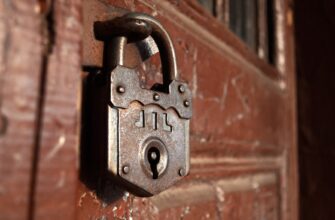👑 Airdrop Royalty: $RESOLV Awaits!
💰 Want to build your crypto empire? Start with the free $RESOLV airdrop!
🏆 A golden chance to grow your wallet — no cost, no catch.
📅 You’ve got 30 days after registering. Don't wait too long!
🌟 Be among the first movers and enjoy the biggest rewards.
🚀 This is your gateway to potential wealth in Web3.
- The Critical Importance of Seed Phrase Security
- Common Seed Phrase Backup Methods Compared
- Password-Protecting Seed Phrases: How It Works
- The Security Advantages of Password Protection
- Critical Risks and Limitations
- Best Practices for Password-Protected Backups
- FAQ: Password-Protected Seed Phrase Backups
- Balancing Security and Practicality
The Critical Importance of Seed Phrase Security
Your cryptocurrency seed phrase is the master key to your digital wealth. This 12-24 word sequence generates all private keys in your wallet, making it the ultimate recovery tool. Lose it, and you lose access to your crypto forever. Compromise it, and thieves can drain your assets instantly. With rising crypto thefts (over $3.8B in 2022 alone), securing this phrase isn’t optional—it’s existential. But is adding password protection to your backup the solution? Let’s dissect the risks and rewards.
Common Seed Phrase Backup Methods Compared
Before evaluating password protection, understand standard backup approaches:
- Physical Media: Handwritten on paper or stamped on metal plates. Immune to hacking but vulnerable to physical damage/theft.
- Digital Storage: Encrypted files on USB drives or cloud storage. Convenient but susceptible to malware and cloud breaches.
- Fragmented Backups: Splitting phrases across locations. Increases complexity but reduces single-point failure risks.
- Specialized Devices Hardware vaults like Cryptosteel. Durable but costly and still requires physical security.
Password-Protecting Seed Phrases: How It Works
Password protection adds an encryption layer to your seed phrase backup. Instead of storing raw words, you:
- Encrypt the phrase using AES-256 or similar encryption
- Set a strong, unique password as the decryption key
- Store only the encrypted version (e.g., in cloud storage or a password manager)
Without the password, the encrypted data appears as gibberish—even if discovered. This creates a “security sandwich”: physical protection for the backup medium + cryptographic protection for the content.
The Security Advantages of Password Protection
- Defense Against Physical Theft: Burglars stealing a metal plate or paper backup can’t access funds without cracking the password.
- Cloud Storage Safety Encrypted backups in services like Google Drive become useless to hackers who breach the account.
- Plausible Deniability: An encrypted file gives no indication it contains a seed phrase, unlike obvious word lists.
- Redundancy Enablement: Allows secure storage of multiple backups across locations without compounding risk.
Critical Risks and Limitations
Password protection introduces new vulnerabilities:
- Single Point of Failure: Forget the password = permanently locked out of funds. No recovery options exist.
- Password Management Challenges: Storing the password securely creates a circular problem (where do you keep that password?).
- Implementation Flaws: Weak encryption tools or accidental exposure during decryption can compromise security.
- False Sense of Security: May encourage riskier backup practices (e.g., storing in more locations).
Best Practices for Password-Protected Backups
If you proceed, follow these protocols:
- Use Trusted Encryption Tools: Open-source apps like VeraCrypt or KeePassXC—never homemade solutions.
- Create a Password Hierarchy: Use a memorable passphrase (6+ random words) unrelated to personal data.
- Separate Physical Locations: Store encrypted backups and password hints in different secure places (e.g., bank vault + home safe).
- Test Recovery Annually: Decrypt a backup with your password to verify functionality.
- Never Store Digitally Together: Avoid keeping passwords and encrypted files on the same device/account.
FAQ: Password-Protected Seed Phrase Backups
Q: Can I use my email password for seed phrase encryption?
A: Absolutely not. It must be a unique, complex passphrase used nowhere else.
Q: Is a password manager safe for storing encrypted seed phrases?
A: Only if you use a reputable manager (Bitwarden, 1Password) with 2FA enabled—and never store the decryption password in the same manager.
Q: What if I die? How can family access my crypto?
A: Include decryption instructions/password hints in your estate plan with a lawyer or secure inheritance service.
Q: Are biometrics (fingerprint/face ID) safe for this?
A: No—biometrics can be compromised and offer no recovery option if scanners fail.
Q: Should I password-protect metal plate backups?
A: Only if stamped as ciphertext. Handwritten passwords on plates defeat the purpose.
Balancing Security and Practicality
Password-protecting seed phrases adds robust security against physical and digital theft but transforms a single-point failure into a dual-point failure. For most users, the safest approach remains:
- Multiple physical backups in fire/water-proof containers
- Geographically distributed locations (e.g., home safe + bank vault)
- No digital traces whatsoever
If opting for password protection, treat the password with the same sanctity as the seed phrase itself. Remember: In crypto security, complexity often breeds vulnerability. Sometimes the simplest solution—pen, titanium, and absolute secrecy—remains king.








